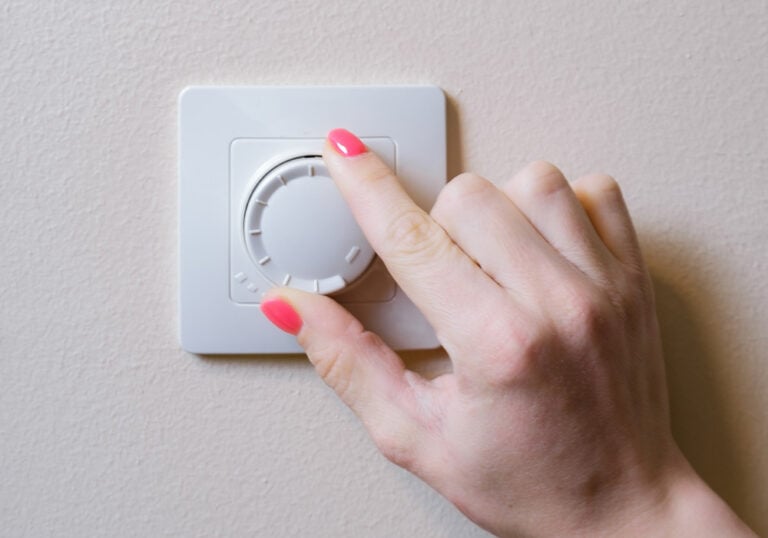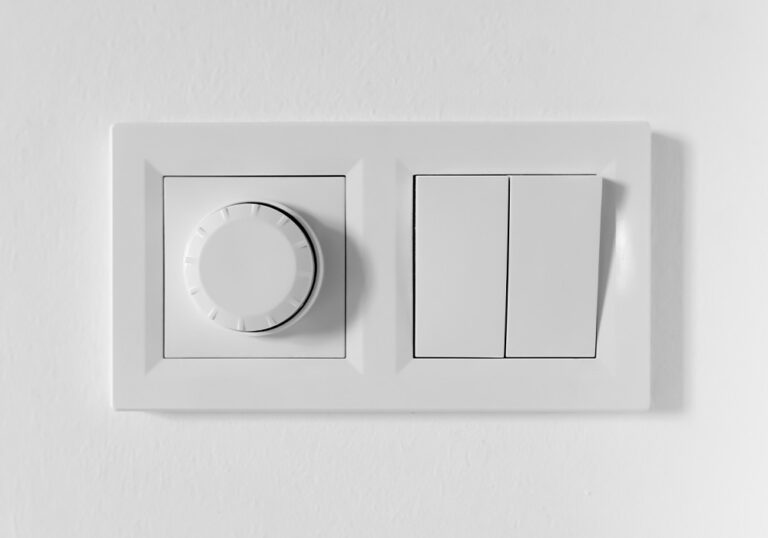Consumer Unit Replacement Costs UK: Essential Guide for Homeowners
Upgrading or replacing a consumer unit is an essential aspect of ensuring electrical safety in your home. A consumer unit, also known as a fuse board, is the heart of your home’s electrical system, distributing electricity to various circuits and protecting you from electrical hazards. As technology and safety standards evolve, it’s crucial to stay up-to-date with current regulations, so knowing the costs associated with consumer unit replacement in the UK is vital.
When it comes to replacing your consumer unit, several factors can affect the overall cost. These include the complexity of the unit, the components required, regional variations in labour costs and adherence to relevant regulations. Understanding the factors that influence these costs enables you to make informed decisions when getting quotes, and can help you identify potential savings.
Key Takeaways
- Upgrading or replacing a consumer unit ensures electrical safety in your home
- Several factors, such as complexity and regional variations, can affect replacement costs
- Understanding these factors can help identify potential savings and make informed decisions
Understanding Consumer Units
A consumer unit, also known as a fuse box or distribution board, is an essential part of your home’s electrical system. It is responsible for distributing electricity from the main supply to individual circuits throughout your property. The primary function of a consumer unit is to protect your home and its occupants from electrical faults, overloads, and short circuits.
Choosing the right consumer unit for your home is vital to ensure the safety and efficiency of your electrical system. There are several types of consumer units available, each with its unique features and capabilities:
- Standard Consumer Units: These traditional units come with fixed fuses that need to be replaced when they blow.
- Split Load Consumer Units: A more modern option, split load units have separate sections for different types of circuits, such as lighting and power sockets. They often use miniature circuit breakers (MCBs) and residual current devices (RCDs) for better protection.
- High Integrity Consumer Units: These units are designed for larger or more complex properties, with multiple sections and a variety of protection devices, including MCBs, RCDs, and RCBOs (combined MCBs and RCDs).
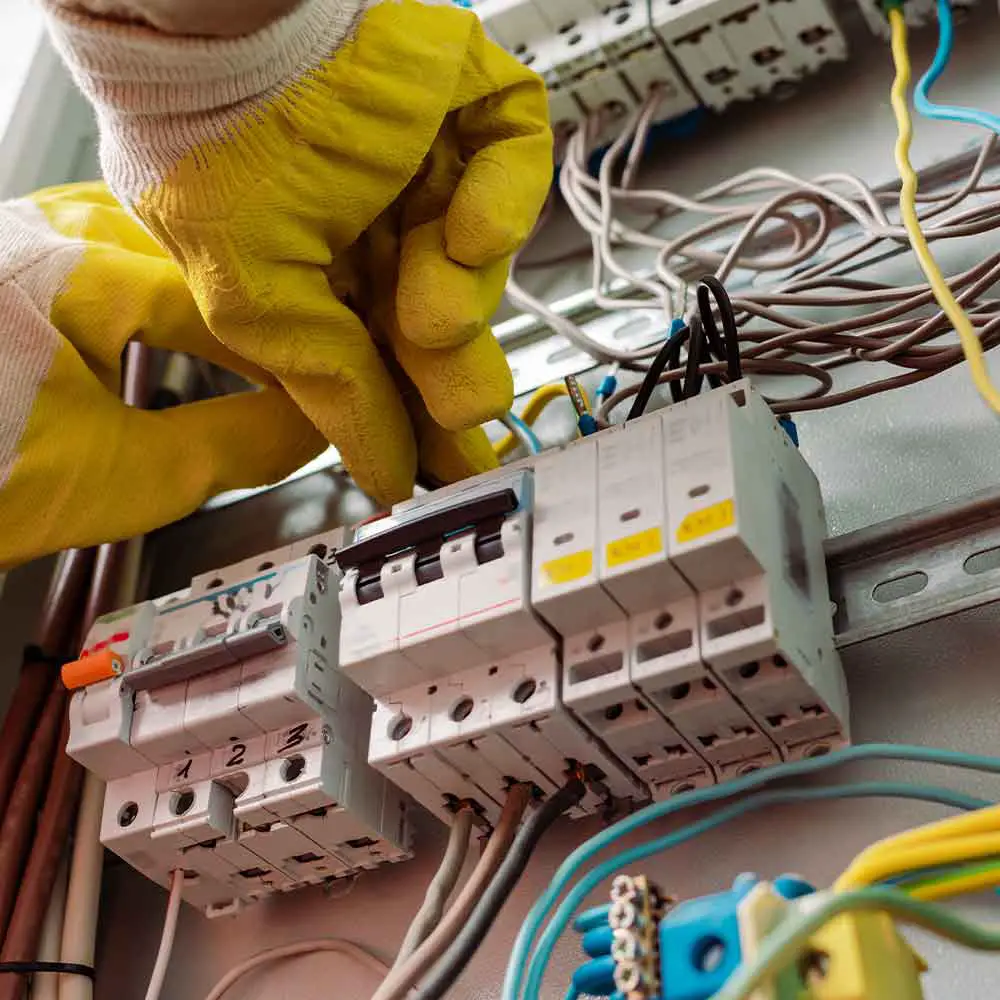
When it comes to replacing your consumer unit, it is crucial to hire a qualified electrician to carry out the job. They will ensure that the new unit is properly installed and complies with the latest UK Wiring Regulations. Keep in mind that the cost of consumer unit replacement depends on several factors, such as the type and size of the unit, the complexity of the installation process, and your location in the UK.
In conclusion, understanding consumer units and their primary function is crucial to ensure the safety of your home’s electrical system. Selecting the appropriate unit and hiring a professional electrician for installation will keep your property protected from potential electrical hazards.
Components of a Consumer Unit
When considering a consumer unit replacement, it’s essential for you to understand the components that make up a unit. Becoming familiar with these elements will assist you in making well-informed decisions around your consumer unit.
Main Switch: The primary switch is a crucial part of your consumer unit, as it enables you to shut off power supply to your home during electrical maintenance or emergencies. This is often a double-pole switch, disconnecting both live and neutral connections simultaneously.
Circuit Breakers: Your consumer unit will have circuit breakers in place to protect your electrical circuits. When an excessive amount of current flows through a circuit, the circuit breaker will trip, cutting off power to prevent overheating and potential fires. They come in different ratings, with sizes depending on the specific circuit requirements in your home.
Residual Current Devices (RCDs): RCDs are a critical safety feature in modern consumer units. They detect any imbalance in the electrical current within a circuit, indicating a fault or leakage to earth. If a fault is detected, the RCD will disconnect the electrical supply immediately, reducing the risk of electrocution from faulty appliances or cable damage.
Fuses or Miniature Circuit Breakers (MCBs): These small devices work alongside circuit breakers and RCDs to prevent individual circuits from overloading or causing short circuits. MCBs are a more modern alternative to traditional fuses, as they can be easily reset after a fault has been resolved.
Busbar: The busbar links all circuit breakers, RCDs, and other protective devices within your consumer unit, ensuring a consistent flow of electric current. It is typically made of copper or an aluminium alloy to provide excellent electrical conductivity.
Now that you’re familiar with the various components within a consumer unit, you can better understand the significance of each element in maintaining your home’s electrical safety. When researching or discussing consumer unit replacement options, ensure you consider the quality and suitability of these components for your specific needs.
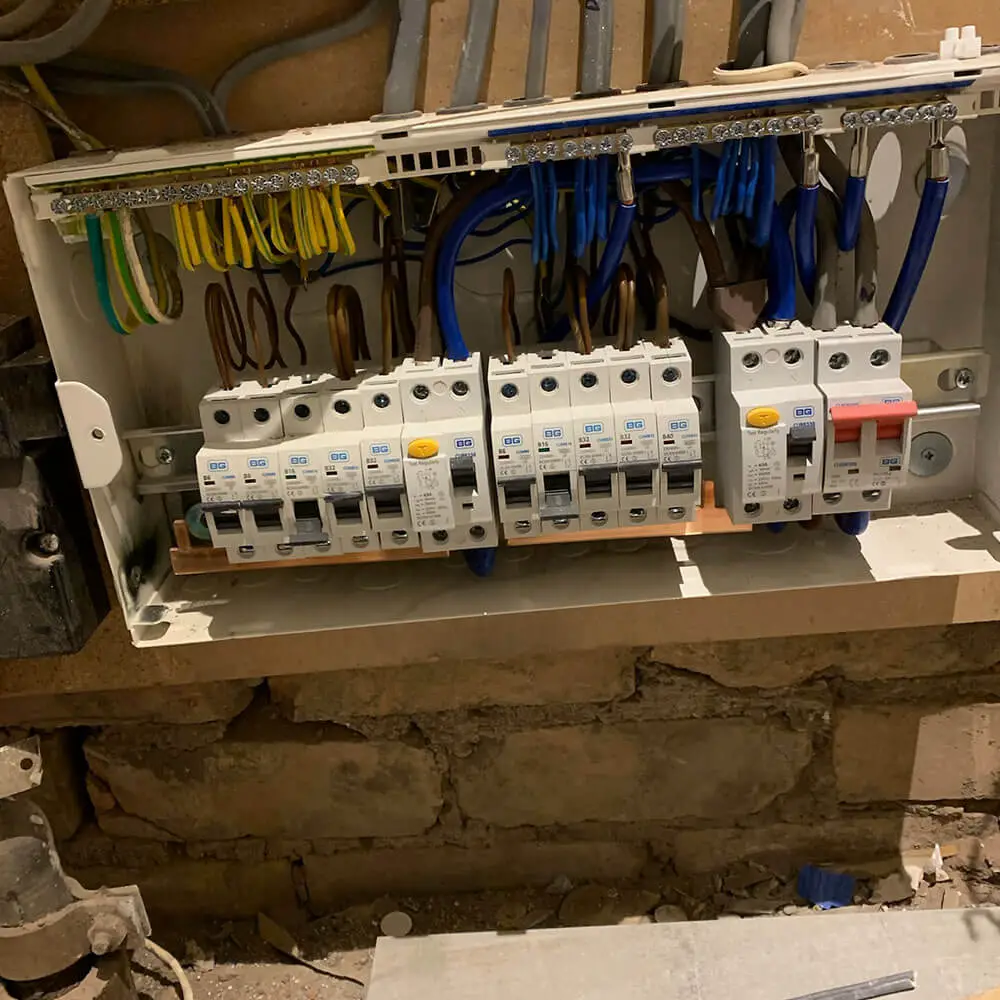
Factors Affecting Replacement Costs
When it comes to replacing your consumer unit, several factors can influence the overall cost of the project. Understanding these factors can help you better estimate the expense and plan your budget accordingly.
Size of the consumer unit: The size of the consumer unit directly impacts the cost of replacement. Larger units typically require more materials, components, and labour, making them more expensive to replace. You can generally expect to pay more for a larger consumer unit replacement than for a smaller one.
Age of the electrical system: Older electrical systems may need significant upgrades when replacing a consumer unit. This could involve rewiring the entire system and updating other components, such as sockets and switches. All these additional works will add to the overall cost of the replacement.
Type of consumer unit: There are various types of consumer units available in the market, and each comes at a different price point. The most common types are the split load and the high integrity units. When choosing a replacement consumer unit, consider the specific requirements of your home and the associated costs of each type.
Professional fees: The cost of labour is a crucial factor in determining the total expense of replacing a consumer unit. Experienced electricians will typically charge higher rates, but you will also benefit from their expertise and the assurance of a job well done. It’s highly recommended to get at least three quotes from reputable electricians before proceeding with the project.
Location: Finally, the region you live in can also affect the cost of replacing a consumer unit. Prices can vary across the UK, with higher costs being observed in urban areas such as London. It’s worth researching local rates in your area to better understand how this could impact the overall cost.
By considering these factors, you can better anticipate the cost of replacing your consumer unit and make informed decisions about your project.
The Replacement Process
Inspection
The first step in replacing your consumer unit is ensuring an inspection takes place. A qualified electrician will evaluate your current electrical system and identify if you require a new consumer unit. They will also determine the appropriate size and specifications to match your property’s needs.
Installation
Once the correct consumer unit has been chosen, the installation process begins. The electrician will:
- Remove the old unit by disconnecting each circuit and labelling them for reference.
- Mount the new consumer unit, ensuring it complies with relevant safety standards.
- Connect each circuit to the new unit, double-checking for accuracy and proper installation.
During the installation, you may experience a temporary power outage. It is essential to plan accordingly and notify any residents or occupants.
Certification
After the successful installation of your new consumer unit, the electrician must carry out testing to confirm it meets safety regulations. Upon completion, they will issue you a certificate known as an Electrical Installation Certificate (EIC). This document validates the work done and assures the unit’s safety and compliance with regulations.
Remember, relying on a qualified and reputable electrician for your consumer unit replacement ensures a smooth process and adherence to safety standards.
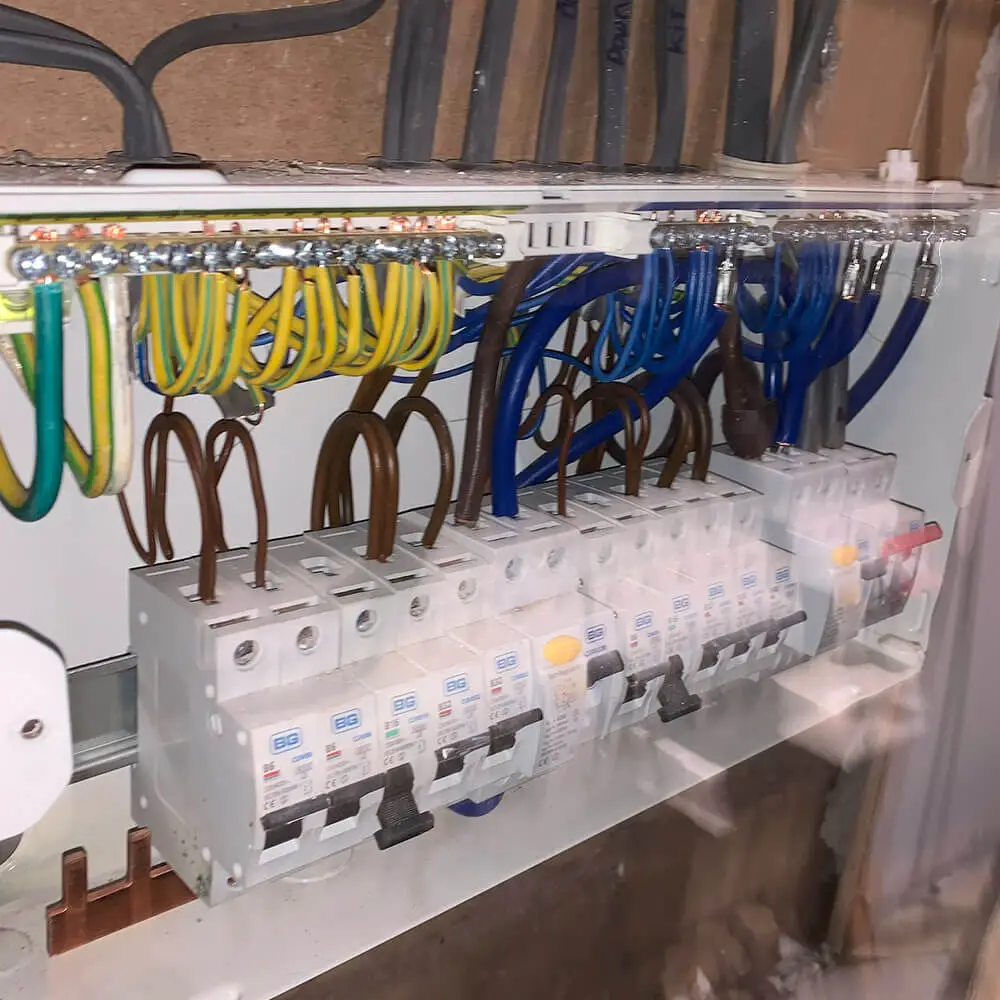
Average Costs in the UK
Replacing a consumer unit in the UK can vary in price depending on several factors. To give you a clear idea of the costs involved, here is a breakdown of the average prices for consumer unit replacement.
Labour Costs: The labour costs for an electrician to replace your consumer unit typically range from £150 to £250 per day. Most electricians can complete the job within a day, but some may require an additional day, especially if your existing unit is old or the wiring needs significant work.
Consumer Unit Costs: The price of a consumer unit depends on the number of circuits, the quality, and the brand. You can find consumer units starting from £50 for a basic unit with 6 to 8 circuits, with higher quality and larger units costing up to £200 or more. You’ll also find units with additional features such as surge protection and built-in circuit breakers for increased safety.
Additional Materials: Apart from the consumer unit itself, you may also need to budget for replacement circuit breakers, earthing, and other materials. These costs can range from £10 to £50, depending on the items required.
Certification: After completing the consumer unit replacement process, a qualified electrician should issue an Electrical Installation Condition Report (EICR) to ensure everything is done according to regulations. These certifications usually cost between £50 to £100.
Taking all the above factors into account, replacing the consumer unit in the UK can typically cost between £300 and £600. However, this range can vary depending on your specific requirements and additional work needed in your property. Remember always to hire a licensed electrician, as they are qualified to carry out the work safely and in compliance with UK regulations.
Costs Breakdown
Labour Costs
When replacing a consumer unit in the UK, you need to account for labour costs. These can vary depending on factors such as the electrician’s experience, location, and the size of the project. Generally, you can expect to pay between £250 and £450 for labour. This includes the electrician’s time spent on the job, as well as any additional work required, such as installing new circuits or rewiring. It’s a good idea to get multiple quotes from different electricians to secure the best price for your consumer unit replacement.
Parts Costs
In addition to labour costs, you will also need to consider the expense of the new consumer unit and any additional components. The cost of a consumer unit can vary based on factors such as brand, size, and features. Here’s a rough breakdown of some common consumer unit prices:
- Entry-level consumer units (6-8 circuits): £40 – £70
- Mid-range consumer units (10-12 circuits): £70 – £120
- Higher-end consumer units (14+ circuits): £120 – £200
Additional components that may be required include circuit breakers, which can cost between £10 and £30 each, and residual current devices (RCDs), which can range from £20 to £70. It is essential to choose high-quality components to ensure the safety and efficiency of your electrical system.
In summary, the total cost of a consumer unit replacement in the UK will depend on various factors, including the electrician’s labour fees, the type of consumer unit chosen, and any additional components needed for the job. By obtaining multiple quotes and researching the market, you can find a suitable solution for your consumer unit replacement that fits your budget and meets your requirements.
Regional Variations in Costs
When it comes to Consumer Unit Replacement Costs in the UK, you can expect some variations in pricing depending on the region. Factors such as local labour rates, availability of electricians, and specific regional regulations can influence the overall cost of the project.
For instance, you may find that the cost of Consumer Unit Replacement is higher in London and the South East, where labour costs tend to be more expensive. Additionally, areas with a higher demand for electrical services might also see a higher overall cost.
Moreover, regional differences in regulations and requirements may impact the cost. Some areas might have stricter electrical safety regulations or additional requirements that installers must adhere to, which can lead to increased expenses in certain regions.
In contrast, areas with less demand for services and lower labour costs, such as more rural areas or locations in the North of England, may have more affordable rates for Consumer Unit Replacement projects. It’s important to keep these factors in mind when considering the overall cost of the project in your area.
To get a better understanding of how this plays out across the UK, consider the following example rates for Consumer Unit Replacement:
- London and South East: £450 – £600
- South West and Wales: £400 – £550
- Midlands: £375 – £525
- North of England: £350 – £500
- Scotland: £350 – £500
- Northern Ireland: £325 – £475
Please note that these are just example rates and may change depending on the circumstances surrounding your specific project and location. It is always advisable to gather quotes from multiple electricians to get an accurate and competitive estimate for your Consumer Unit Replacement project.
Remember, regional variations in costs are normal for any type of home improvement project, not just Consumer Unit Replacement. It’s essential to remain aware of these differences and how they can impact the overall cost in your area, so you can budget accordingly and make an informed decision for your electrical needs.
Understanding Quotes
When you’re looking to replace your consumer unit, it’s essential to understand the quotes you receive from electricians. This will help you choose the best service provider while ensuring you’re aware of the costs involved.
Firstly, it’s important to ensure the quote is comprehensive and includes all the necessary elements. A complete quote should cover:
- Labour costs for the electrician
- Cost of the new consumer unit
- Disposal fees for the old unit
- Any additional expenses, such as wiring or accessories
Compare multiple quotes. To ensure you’re getting a fair price, obtain quotes from several electricians. This will give you a clear idea of the prevailing market rates and allow you to choose the best option for your budget.
Pay attention to the electrician’s qualifications and experience. It’s crucial to hire a certified electrician who is registered with a recognised governing body, such as the NICEIC or ELECSA in the UK. This ensures that they are qualified to carry out the work safely and in compliance with regulations.
Remember to not only consider the cost but also the quality of work. Going for the cheapest quote may not always be the best choice, as it could potentially lead to substandard work or safety issues.
Finally, make sure the quote is in writing and includes the electrician’s contact details. This will enable you to reach them in case of any issues or queries after the replacement is completed.
By understanding the factors that affect your consumer unit replacement quote and considering the points above, you can make an informed decision and ensure a successful outcome for your project.
Reducing Replacement Costs
Proper planning and shopping around can help reduce the cost of consumer unit replacements in the UK. This section provides advice on reducing the replacement costs without compromising safety and quality.
Get multiple quotes: Before settling on a contractor, contact several electricians and request quotes for the replacement. Compare the prices and ensure they’re including the costs of installation, labor, and materials. This will allow you to find the most cost-effective option without sacrificing the quality of the work.
Select an energy-efficient unit: Consider investing in a consumer unit that is energy-efficient. Such units may come with a higher upfront cost, but their long-term savings on your energy bills will offset this expense. They can also increase the value of your property should you decide to sell.
Timing matters: If it’s not urgent, wait for seasonal promotions or discounts on consumer units and related services. Many electricians offer discounts during quieter periods, so scheduling a replacement during these times can result in savings.
Package deals: Some electricians may offer package deals when replacing a consumer unit and carrying out additional work simultaneously. Ask the electrician about this possibility and evaluate the potential savings.
Remember to prioritise safety and choose a qualified electrician who works to British Standards. By following the tips mentioned above, you can reduce the costs of a consumer unit replacement while ensuring the job is done to a high standard.

